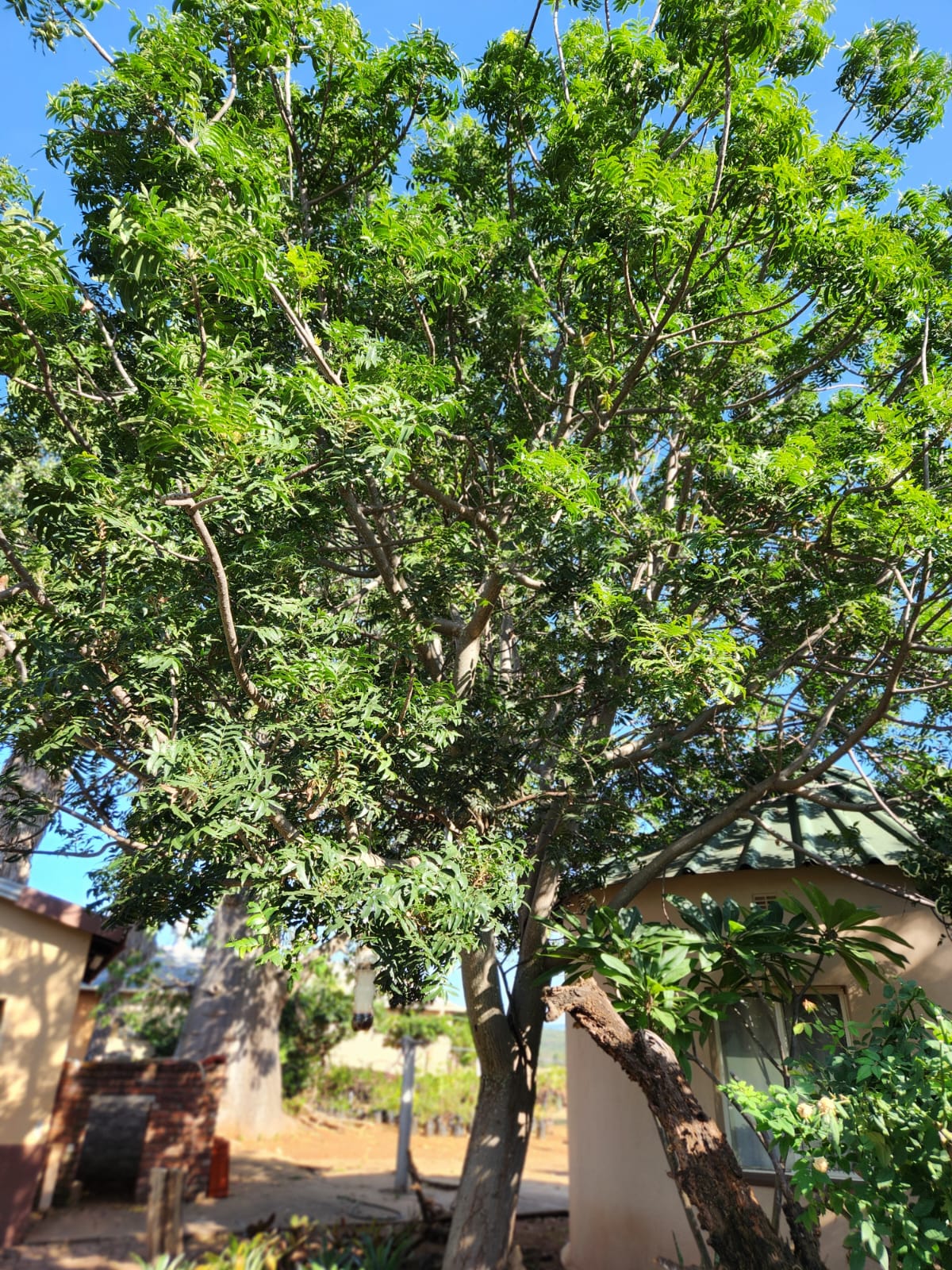Wild Plum Tree (Wildepruimboom) #
Harpephyllum caffrum

Quick Info #
- Distribution: Mozambique and Zimbabwe to Eastern Cape – evergreen woods and bushveld, near streams
- Family: Anacardiaceae
- Florescence: November to December
- Fruiting: December to March
- Leaf habit: evergreen
- Name origin: “Harpe” means “sickle-shaped”, “phyllum” means “leaf” and “caffrum” means “from Caffraria (Eastern Cape)”
- Other names: gwenjabessie, mothêkêlê (Northern Sotho), suurbessie, umgwenya (Zulu, Xhosa)
Description #
Striking and unusual about this medium to large tree is the odd red leaf specking the mostly green, roundish crown. The leaves often grow together in rosette-shaped clusters at the ends of branches. The leaflets are shaped like sickles and the small, white flowers, appearing in sprays, are unassuming. The edible fruit is fleshy and bright red when ripe.
The bark, while smooth on young branches, is rough and looks like crocodile hide on aged trunks. The wood is heavy and strong. Only the female trees bear fruit. The fruits may vary between trees – from sour to sweet.
Uses & Ecology #
Various birds enjoy the fruits of this tree. People also use the fruit to make a jelly preserve or even a lemonade-like drink or rosé.
The tree offers shade to livestock on sunny days. Of course, it offers humans a similar benefit, which gives it some popularity in gardens, in addition to the fact that it can attract butterflies.
The bark has many traditional medicine and other uses. Dyes are made from it. A decoction is used as a vomitive or a blood purifier. A skin wash treats acne and eczema. Sprains and bone fractures are treated with powdered, burnt bark.
The wood is used as timber.
References #
- Coates Palgrave, K. & P. & M. (1989) Die Suid-Afrikaanse Boomgids. Johannesburg: Central News Agency.
- Dlamini, M.D. (2004) Harpephyllum caffrum. Available at: https://pza.sanbi.org/harpephyllum-caffrum (Accessed 20 October 2025)
- Van Wyk, B & P. (1997) Field Guide to Trees of Southern Africa. Cape Town: Struik Publishers.
- Van Wyk, B. & P. (2008) Identifiseer die Bome van Suider-Afrika. Cape Town: Struik Publishers.
- Venter, F & J.A. (2002) Benut on Inheemse Bome. Pretoria: Briza Publications.
Caution: Consult a qualified health practitioner before considering medically using or ingesting any plant parts. Any mentioned traditional uses are based on cultural practices and anecdotal evidence. They are not necessarily clinically proven or supported by modern scientific studies.